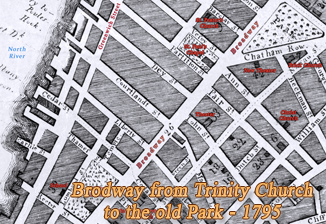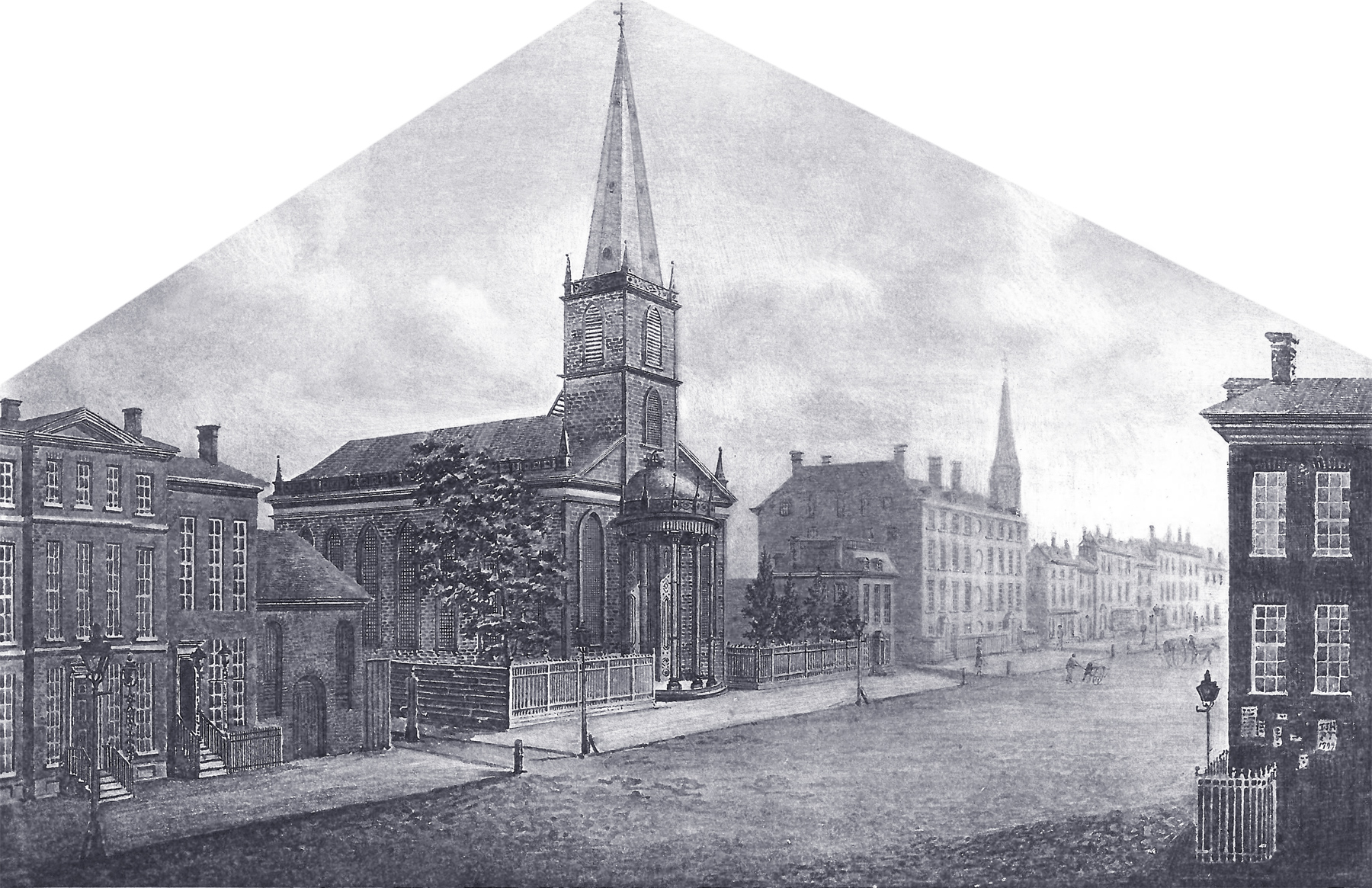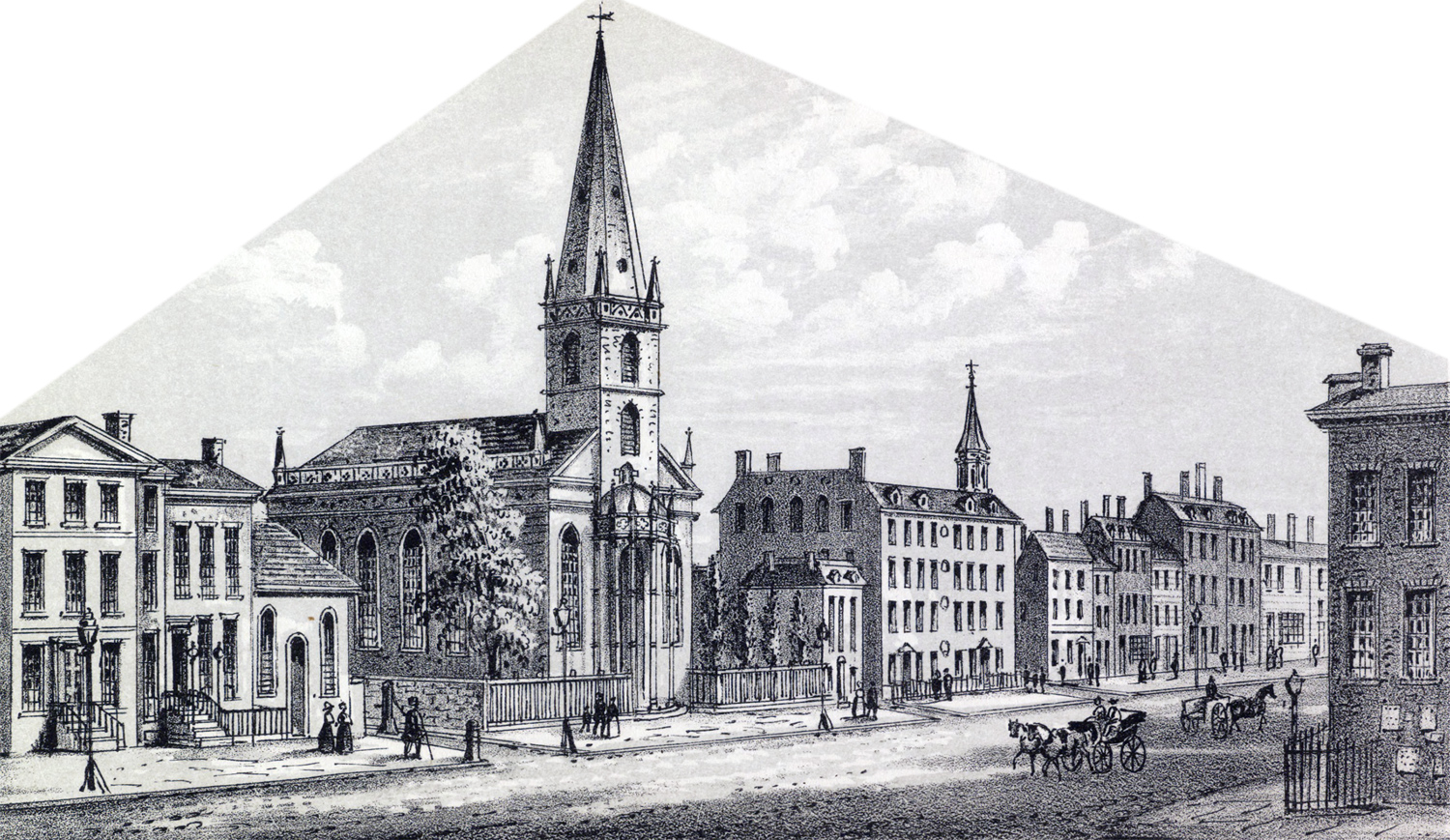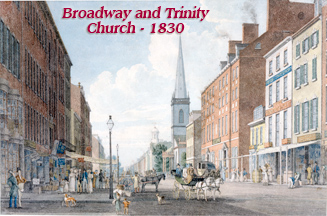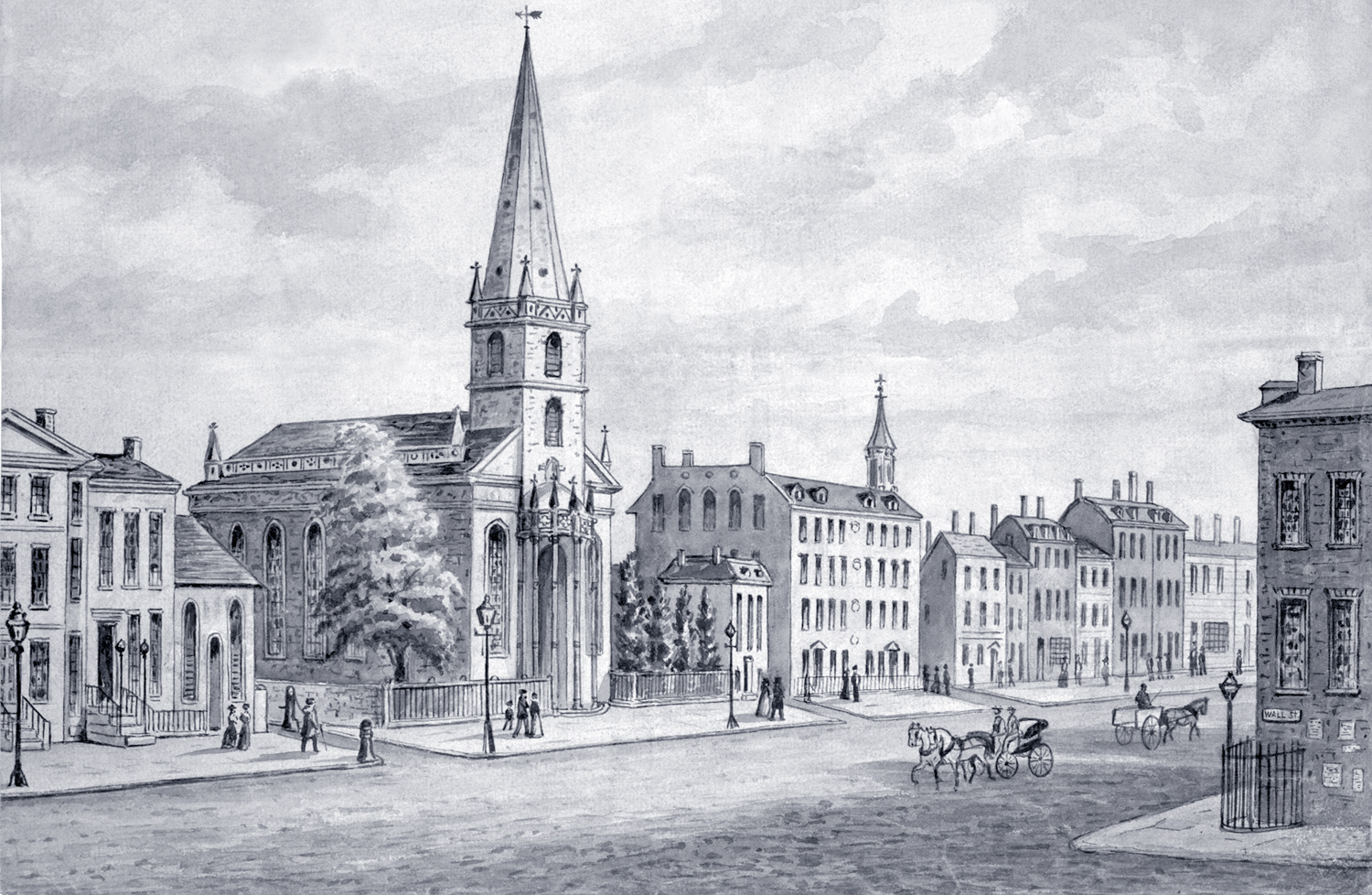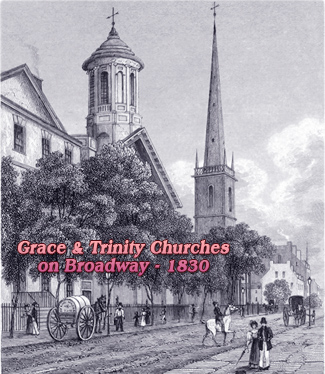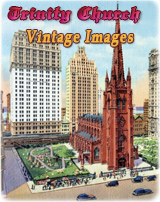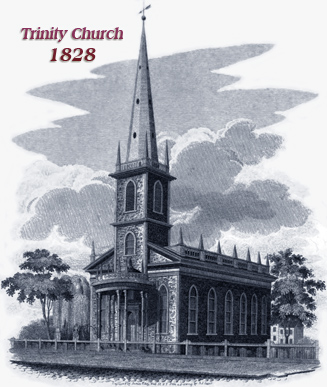"Very curiously, The New-York Directory for 1786 gives William G. Forbes, goldsmith, at No. 88 Broadway, although we know that in 1794 the numbering throughout the city was changed. In 1799 he is at No. 90 Broadway, while No. 88 is given as the address of Peter Andrews “skinner,” evidently a tenant of Forbes.
On the extreme left the large house with the pediment is that of John R. Livingston, who in 1791, acquired the two lots on which it stood, one from the heirs of Collin van Gelder, Liber Deeds, XLVII: 360, 363, and the other from Elliston and John Perot.— Liber Deeds, LVIII: 397. At the time of this purchase both lots had houses on them, so that it seems a fair presumption that Livingston had the old buildings demolished and the new double house built some time shortly after 1791.—See Pl. 56. In 1798, Dr. Hosack occupied the south half of the house, No. 65 Broadway, and Livingston the north half, No. 67.
The building No. 69 Broadway was a hotel, run at this time by John Lovett who, in 1802, became proprietor of the Tontine City Hotel, erected in 1792, and shown in the view on the north-west corner of Thames Street and Broadway. Just north of Lovett’s hotel are the ruins of the old Lutheran Church, at this period used as a storehouse by David and Philipp Grim. As early as 1792 David Grim, who was treasurer of the Lutheran Church, had rented the old church building for a store, paying £28 per annum. In September, 1793, the lease was renewed at £16, “he to keep the same in repair.” Mr. “Cambhel” (Campbell), a school-master, applied on January 5, 1795, for a lease of the old church, promising, if granted the use of the building, to lay out £200 in repairs in order to make it fit for an academy, and to allow the free use of the church to the Lutheran congregation for divine services on Sunday and one other day in the week. At about this period subscriptions were solicited to rebuild the church, but, although £880 was subscribed, the Board lacked the courage to proceed and decided, on January 19th, to rent the church to Mr. Campbell at £60 per annum for not more than five years, on condition that he “‘put the Church Yard in a good fence.” When, however, it was found that Mr. Campbell’s plans for alterations differed materially from those first proposed, the matter was dropped. Again, in 1800, Campbell attempted to secure a lease of the old church, but it was decided, in ‘‘order to Keep the peace of the Congregation and other obvious reasons,” not to rent the church to him, but that ‘‘David and Philipp Grimm the present occupiers should have and occupy the said burnt Church as a Store only they puting (sic) the same in decent repair for that purpose at their own expences.” They were to pay $100 per annum rent for its use.
The Lutheran Minutes, from which the above notes were taken, contain no further reference to the rental of the old church. In the church Journal of 1796-1821, p. 113, under date of May, 1805, we find a reference to the sale of the ground in Broadway to Trinity Church for £6000. The old church was torn down soon after this period and upon its site, in 1806-9, was erected Grace Church, an independent Episcopal organisation, although founded by Trinity Church.
North of Trinity Church is the old Van Cortlandt mansion, sold in 1791 to Cornelius Ray.—Liber Deeds, XLVI: 434, 436. In the directory for 1799, Cornelius Ray, State Loan Office, is given at No. 111 Broadway. The steeple appearing above the City Hotel must be intended for that of St. Paul’s Chapel, although it is drawn much too far back from Broadway."
